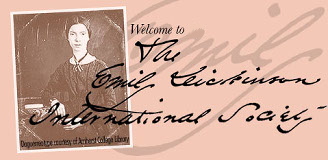

You are herePolezhaka, Tatiana and Peter Mitchell: "Introducing Emily Dickinson to Russia: Translating Words, Preserving Meanings in the Translations of T. Polezhaka"
Submitted by RFranz on July 18, 2013 - 5:02pm
Introducing Emily Dickinson to Russia: Translating Words, Preserving Meanings in the Translations of T. PolezhakaTatiana Polezhaka and Peter Mitchell, Tomsk State University, Russia Emily Dickinson is little known to ordinary Russian readers. Introduction to her work in our country began in the 1940’s. But it is too early to talk about the reception in general of her creativity in our country, because not all her poems are translated now. I published the first book of translations of her poems called “My letter to the World” in May 2012. The book includes 116 translations of Dickinson’s poems. I am interested in conveying the character of the poem. So I am interested in realities. They can keep the national spirit of the poem. I try to preserve realities in the translations. I rely upon the general theoretical position, on intuition and, most importantly, on the context of the work. In the translations I have classified the realities that lie on the surface. These are the subject realities. Today, when I have translated 446 poems, I have to say that more than half of her poems contain realities. I mean that only through the transcription a reader can become immersed in the original text. There is no need to talk about preserving the semantics in the translating poems. It’s obvious. I’m interested to convey the mood of the poem. So my work is based on the two principles: 1. I try to keep the size of the rhyme in the translation of the poem. Onomatopoeia and interjections are very close to the realities. Onomatopoeia really reflects the national color. Interjections are articulate onomatopoeia for the expression of feeling. It is very complicated to translate feelings from the foreign language. But to keep them in the translations is very important. Translation of realities requires, in my view, a very cautious approach. I set a goal of translating all of Emily Dickinson’s poems into Russian, because only a consistent and complete translation of all her poems may allow Russian linguists to approach the issue of the reception of Emily Dickinson's creativity in Russia as a whole.
|